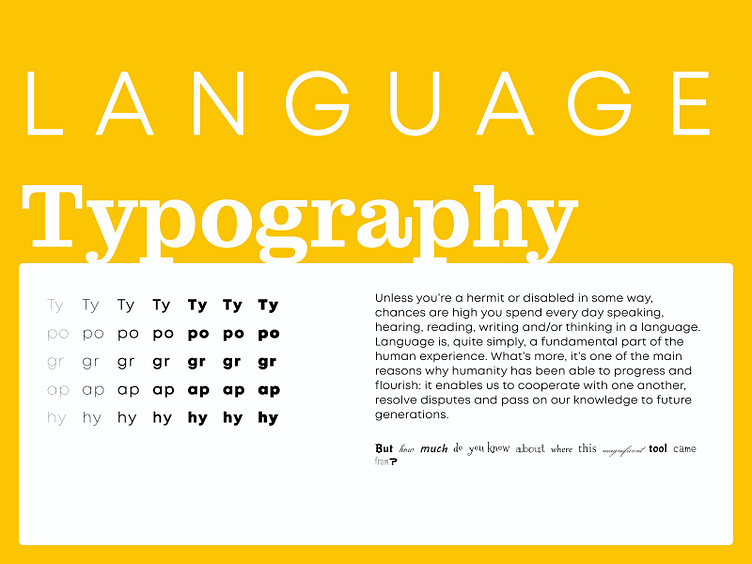What speaks louder? Language or Type
Cal Swan said, "These two distinct areas often come together in practice as there is clearly a very strong relationship between the conception of the words as a message and their transmission in visible form.”
Being a linguist, I always find this relation interesting. While language brings our thoughts to life, the visual language established when designing with type can bring into play not only emotions, but also physical responses.
Typography is used to communicate tone of voice, personality, age, gender and mood, and it can be easily manipulated. If, instead of serif font that so successfully represents this woman’s personality, if we used a slab serif, cursive, bold, italic, suddenly the character changes, as does the emotional impact of the statement. The narrator is no longer definitively female; she is no longer in their mid-60s, infact, she can be a he, an angry he, or a megre child with a crayon in his hand or a penguin who's feeling relatively creative today, who knows? It’s a great example of how quickly the tone can shift with a simple change of typeface.
All the alterations demonstrated in this last line of the above image, show that typographic treatment works alongside verbal language to create, enhance and alter meaning.
While the aesthetic value of design is always important, the significance of type in influencing meaning should not be underestimated.
The role — and, in fact, the obligation — for us as the designers in establishing a tone that adds meaning to the verbal message is a matter of regular debate. Many graphic designers and academics argue that the designer has a responsibility to add “flavor” to their work, not only helping to convey and enhance meaning, but also making the message enjoyable and encouraging to “read” and also memorable.
